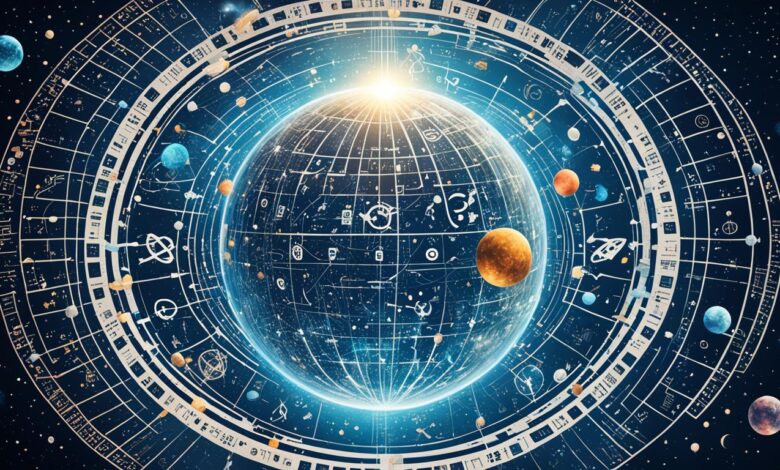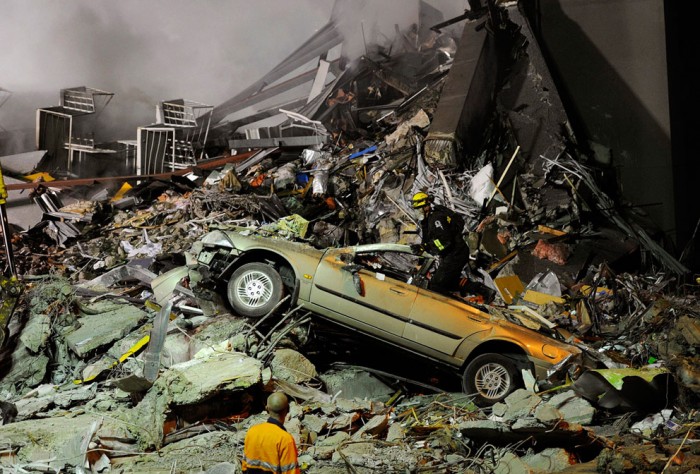
Top 7 Theories Against the Simulation Hypothesis
Have you ever wondered if our reality is nothing more than a sophisticated simulation?
The Simulation Hypothesis proposes that our entire existence is a virtual reality, created by advanced beings or computer systems. However, there are compelling theories that challenge this idea and offer alternative explanations for the complexities of our universe.
In this article, we will explore the top 7 theories against the Simulation Hypothesis, delving into the realms of quantum mechanics, computational limitations, and the enigma of consciousness. Are we living in a simulated world or is there more to our existence than meets the eye?
Join us as we unravel the mysteries of virtual reality, investigate empirical evidence, and question the boundaries of computational power. We will examine the concept of consciousness and delve into the intricate laws of physics that govern our reality. By exploring these theories, we will uncover the potential flaws and limitations of the Simulation Hypothesis, ultimately leading us to reflect on the nature of our own existence.
So, are you ready to challenge the notion of a simulated universe? Let’s dive in and explore the thought-provoking theories that argue against the Simulation Hypothesis.
The Coincidence Conundrum
The coincidence conundrum raises an intriguing question: why do humans exist in a reality that seems tailor-made for our existence? This puzzling phenomenon challenges the notion of our reality being a simulated world. One theory proposes an alternative explanation known as the principle of finite imagination.
The principle of finite imagination suggests that the limitations of human imagination play a crucial role in shaping our reality. It posits that creations or concepts beyond the scope of our imagination are unlikely to exist. In other words, our finite capacity to imagine and comprehend the world around us may account for the seemingly perfect alignment of our reality with human existence.
To further understand the principle of finite imagination, consider cultural artifacts. These artifacts are products of human imagination and creativity, reflecting our understanding of the world at a given time. The fact that certain cultural artifacts could not have been conceived or imagined in earlier periods supports the notion that our reality is not a product of simulation but a result of finite human imagination.
| Cultural Artifacts | Period |
|---|---|
| Smartphones | 21st century |
| Flight | 20th century |
| Electricity | 19th century |
| Printing Press | 15th century |
Empirical evidence for the Simulation Hypothesis is met with skepticism in light of the coincidence conundrum and the principle of finite imagination. While proponents of the Simulation Hypothesis argue that empirical evidence supports the idea of a simulated reality, skeptics maintain that this evidence is limited in its ability to definitively prove the existence of a simulation.
The finite nature of human imagination and the existence of cultural artifacts that go beyond the scope of simulation raise doubts about the empirical evidence for the Simulation Hypothesis.
Challenges in Simulating Complex Reality
Simulating complex reality is a daunting task that presents significant challenges for advanced civilizations and computer systems. Our world is filled with intricacies, including a vast amount of data and interactions between various elements, making it incredibly difficult to simulate with complete accuracy.
The field of complexity theory further adds to these challenges, suggesting that even with advanced computational power, simulating the complex systems and interactions found in our reality may be beyond the capabilities of any simulation.
Complexity theory explores the notion that certain phenomena in our reality are emergent and cannot be reduced to simpler components. These emergent behaviors, such as the flocking of birds or the growth of a city, arise from the interactions of numerous individual elements in a complex system.
Simulating these intricate systems requires not only precise modeling of individual components but also capturing the intricacies of their interactions.
Furthermore, the sheer amount of data required to simulate our reality is staggering. Every particle, every atom, every interaction between them contributes to the richness and complexity of our world. Gathering and processing this immense volume of data in real-time poses computational challenges on an unprecedented scale.
Additionally, the dynamic nature of our reality introduces another layer of complexity. Our world is constantly changing and evolving, with each element influencing and being influenced by others. Simulating such dynamic systems in real-time requires immense computational resources and sophisticated algorithms capable of accurately capturing the complexity and interdependencies of these ever-changing systems.
In conclusion, simulating complex reality presents formidable challenges, both in terms of computational power and the intricacies of modeling and capturing the dynamic nature of our world. Despite the advancements in computational technology, complexity theory suggests that fully simulating the complex systems and interactions found in our reality may be beyond the capabilities of any simulation.
Computational Power Limitations
One of the key factors to consider in the Simulation Hypothesis is computational power. However, it is important to recognize that there are inherent limitations to the growth of computational power.
A significant concept in this context is Moore’s Law. Moore’s Law observes that the number of transistors on a microchip doubles approximately every two years. This exponential growth has allowed for the advancement of computing capabilities over the years. However, it is crucial to recognize that Moore’s Law is approaching its physical limits.
The continuous doubling of transistors on a microchip cannot continue indefinitely. As the components of microchips become smaller and smaller, quantum effects and physical constraints begin to emerge. This poses challenges to further exponential growth in computational power, potentially impeding our ability to simulate a reality as complex as ours.
Moore’s Law and Its Limitations
Since its formulation by Gordon Moore, Moore’s Law has been a driving force behind the remarkable advancements in technology we have witnessed. However, the physical constraints of semiconductor manufacturing processes are becoming increasingly apparent.
The miniaturization of transistors has already reached atomic-level dimensions, making it challenging to continue shrinking them further. The fundamental principles of physics constrain the size and performance of these transistors, leading to the eventual plateau of Moore’s Law.
Moreover, as transistors become smaller and closer together, they generate more heat, leading to issues with power consumption and dissipation. This poses significant challenges in maintaining the efficiency and functionality of increasingly densely packed microchips.
Computational Errors and the Observer Effect
Another consideration when dealing with computational power in the context of the Simulation Hypothesis is the potential for computational errors. Even with advanced computing systems, the accuracy and precision of a simulated reality can be compromised by computational errors.
Additionally, the observer effect, a phenomenon in quantum mechanics where the act of observation alters the state of a system being observed, raises questions about the fidelity of a simulated reality. This inherent uncertainty and the impact of observation on a simulated world introduce complexities and challenges that need to be considered.
Moore’s Law and Computational Power
| Year | Transistors on a Microchip | Limitations |
|---|---|---|
| 1971 | 2,300 | N/A |
| 1980 | 29,000 | N/A |
| 1990 | 1,200,000 | N/A |
| 2000 | 42,000,000 | Quantum Effects |
| 2010 | 2,300,000,000 | Heat Dissipation |
| 2020 | 57,000,000,000 | Physical Constraints |
The Problem of Consciousness and Subjective Experience
One of the major challenges in the Simulation Hypothesis is explaining the phenomenon of consciousness and subjective experience. Consciousness is a subjective and personal aspect of human existence that is not fully understood. Simulating the complexity and variety of conscious experiences poses a significant challenge for any simulation.
The origin and nature of consciousness remain elusive, and until it can be fully understood and replicated, the Simulation Hypothesis lacks a complete explanation for this fundamental aspect of human existence.
Quantum Mechanics and Quantum Entanglement
Quantum mechanics adds a fascinating layer of complexity to the Simulation Hypothesis. At the heart of this complexity is the concept of quantum entanglement. In quantum entanglement, particles become connected in such a profound way that the state of one particle instantaneously affects the state of another, regardless of the distance between them.
This phenomenon challenges the very notion of a purely simulated reality, where the actions of particles should be determined solely by the simulation’s rules and algorithms.
Quantum Reality vs. Virtual Reality
The nature of quantum reality introduces significant challenges when considering the Simulation Hypothesis. Quantum mechanics operates on the principles of unpredictability and non-locality, where particles can exist in multiple states simultaneously and instantaneously interact regardless of distance.
These properties of quantum reality create a fundamental barrier to fully simulating quantum phenomena and suggest that our universe may possess aspects that cannot be replicated in a purely virtual reality. The complexities of simulating quantum particles and their behavior within a simulated world are immense.
Challenges of Simulating Quantum Particles
Simulating quantum particles in a virtual reality environment is inherently challenging due to the unique properties of quantum mechanics. The behavior of quantum particles is governed by probabilistic laws, making their exact states uncertain until measured.
The inherent unpredictability of quantum phenomenon, such as wave-particle duality and quantum superposition, poses significant obstacles to accurately reproducing these behaviors within a simulation. Additionally, the non-locality of quantum entanglement, where particles can affect each other instantaneously regardless of distance, presents further difficulties in modeling and replicating these interactions.
Laws of Physics and Information Processing
The laws of physics form the fundamental framework that governs the behavior of our universe. Within the context of the Simulation Hypothesis, these laws play a critical role in determining the feasibility and accuracy of simulating a reality. However, certain aspects of physics pose challenges for information processing in a simulated world.
Minimum Size and Discrete Units in Physics
Physics tells us that there is a minimum size scale and that matter is composed of discrete units such as atoms and particles. These fundamental building blocks are indivisible and possess distinct properties and behaviors. The discreteness of these elements introduces limitations on the precision and accuracy of any simulation.
When simulating a complex reality, the discrete nature of particles and their interactions must be taken into account. In a simulated world, where information processing occurs at discrete levels, representing the continuous behavior of the physical world becomes a challenge.
The ability to capture all the intricacies and nuances of our universe’s continuous processes within the confines of discrete units is a formidable task.
Mass-Energy-Information Equivalence
The concept of mass-energy-information equivalence poses further questions about the feasibility of fully simulating a reality based on information alone. According to this concept, information processing requires a physical substrate, meaning that it requires a material medium to manifest.
In other words, processing and manipulating information have a physical aspect to them. This raises questions about whether a purely informational simulation without a physical foundation can accurately capture the full complexity of our reality.
The intricate interplay between mass, energy, and information challenges the notion that a simulation can replicate the physicality and dynamics of our universe.
| Laws of Physics | Information Processing | Minimum Size and Discrete Units | Mass-Energy-Information Equivalence |
|---|---|---|---|
| Provides the framework for the universe | Processes and manipulates information | Restrictions on precision and accuracy | Information requires a physical substrate |
| Defines fundamental forces and particles | Requires a material medium for manifestation | Simulating continuous processes is challenging | Raises questions about purely informational simulations |
| Influences the behavior of simulated reality | Constraints on the capabilities of simulations | Limits the representation of the physical world | Challenges the replication of physicality |
Physical Evidence of a Non-Simulated Universe
There is physical evidence that suggests our universe is not a simulation. Dark matter, which interacts only gravitationally and cannot be explained by a purely simulated reality, poses a challenge to the Simulation Hypothesis.
Particle-antiparticle collisions and the creation of virtual particles also indicate the existence of physical phenomena that are not easily replicated in a simulated reality.
The existence of dark matter, a type of matter that does not emit, absorb, or reflect light, has been inferred from its gravitational effects on visible matter. This mysterious substance comprises about 85% of the matter in the universe, yet its nature and properties remain elusive. If our universe were a simulation, it would be difficult to explain the presence and behavior of dark matter.
Additionally, the phenomenon of particle-antiparticle collisions further challenges the notion of a simulated reality. These collisions, which result in the annihilation or creation of particles and antiparticles, produce measurable effects that are inconsistent with a purely simulated universe. The intricacies and complexities of these interactions suggest that our universe is governed by physical laws and processes that extend beyond simulation.
- The presence of dark matter contradicts the concept of a purely simulated reality.
- Particle-antiparticle collisions exhibit physical phenomena that cannot be easily replicated in a simulated universe.
Furthermore, the existence of a fifth state of matter known as “Bose-Einstein condensate” provides additional evidence against the Simulation Hypothesis. This unique state, achieved at ultra-low temperatures, demonstrates quantum effects on a macroscopic scale and highlights the intricate interplay of physical forces. Simulating such a state would require a level of computational complexity and accuracy that may go beyond the capabilities of any simulation.
In summary, the physical evidence of dark matter, particle-antiparticle collisions, and the existence of a fifth state of matter challenges the Simulation Hypothesis, suggesting that our universe is likely to be a non-simulated reality.
Conclusion
After carefully examining the top theories against the Simulation Hypothesis, it becomes clear that there are numerous challenges and limitations that cast doubt on the idea of our reality being a simulation. The coincidence conundrum raises questions about the fine-tuning of our existence and whether it is a result of a simulated reality or a consequence of our finite imagination.
Additionally, simulating complex reality proves to be a daunting task, considering the vast amount of data and intricate interactions that occur in our world.
Furthermore, the limitations in computational power pose significant obstacles to simulating a reality as complex as ours. Moore’s Law, which has driven the exponential growth of computing power, is approaching its physical limits, challenging the feasibility of accurately simulating our universe.
The enigma of consciousness and subjective experience, as well as the complexities of quantum mechanics and the laws of physics, further challenge the Simulation Hypothesis.
While the Simulation Hypothesis remains an intriguing and thought-provoking concept, the evidence and theories against it suggest that our universe is more likely to be a non-simulated reality. The various challenges and limitations discussed in this article highlight the complexities and uncertainties involved in simulating a universe as intricate and diverse as our own.
As we continue to explore the nature of our existence, it is important to critically analyze all theories and consider the empirical evidence before drawing any definitive conclusions.














